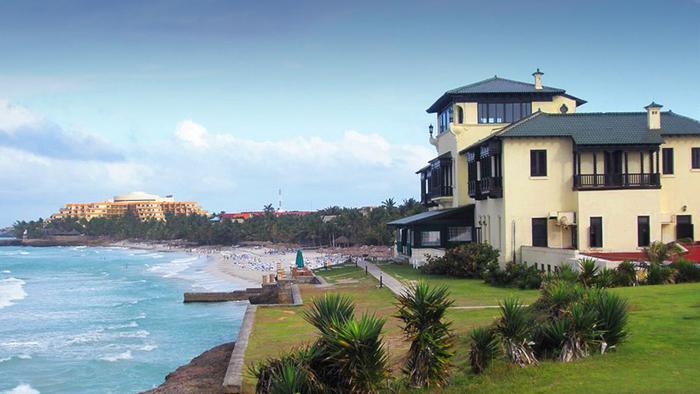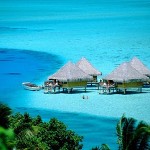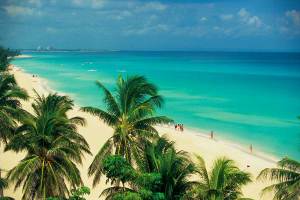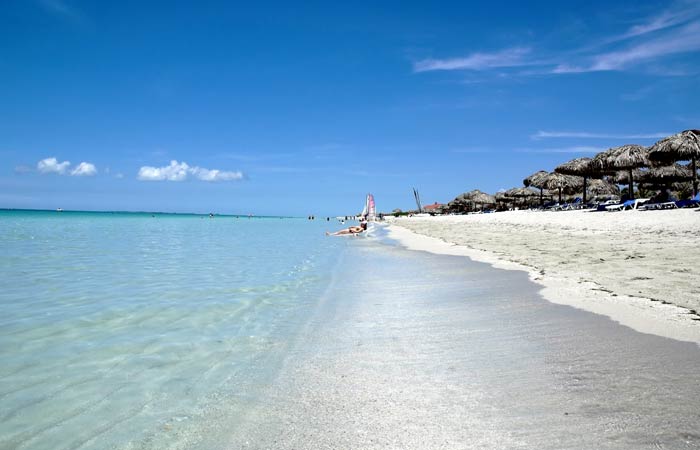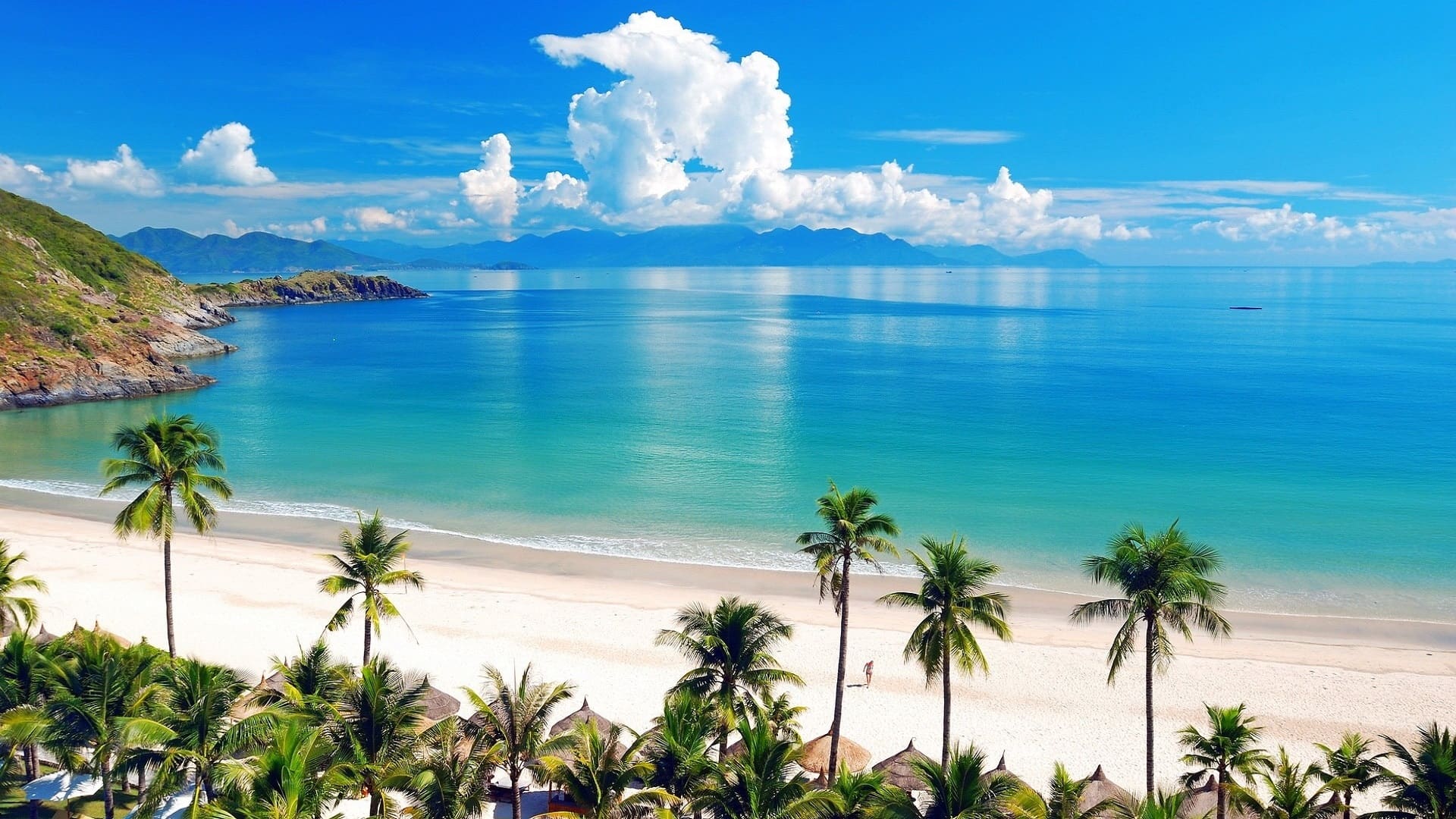 BRIEF HISTORY OF ONE OF THE MOST BEAUTIFUL BEACHES OF THE WORLD, VARADERO BEACH.
BRIEF HISTORY OF ONE OF THE MOST BEAUTIFUL BEACHES OF THE WORLD, VARADERO BEACH.
Varadero is located on the northern coast of the province of Matanzas, the Hicacos Peninsula was not always the famous Caribbean beach that everyone wants to visit. Between the Cárdenas Bay and the Strait some 140 kilometers east of Havana, on the eastern end of the Vía Blanca highway. The peninsula is only 1.2 km wide at its widest point and is separated from the island of Cuba by the Kawama channel. This tongue of land but extends more than 20 kilometers from the coast in a northeasterly direction and its tip, Punta Hicacos, is the northernmost point of the island of Cuba. In the northeastern end of the peninsula there is a nature reserve with virgin forests and beaches.
The first attempt to create a village dating from 1815, until finally in 1883 was created by ten Cardenenses families communal society known as ¨ ¨ decenviros in society that acquired the site of the former estate of Don Bernardo García Carrillo Varadero for the purpose of promote the village of Varadero. The original plan, which had forty blocks, was approved in 1887.
However, the beautiful beach was practically unknown in the rest of the island, mainly communications and because fashion was going to spend the summer in Europe.
From these first years of the foundation of the city, Trinidad was divided into two clearly defined areas: the north coast, the beach, inhabited by the founding families and by those who established the first guest houses to accommodate tourists and foreigners, and in the south the coast, coming mainly to the fishermen. The abundance of snappers, mere seafood, crustaceans, and guarantee the subsistence of the poor population and local consumption.
In 1910 Varadero began to compete with other clubs created like the Halley and Varadero Beach. This led to the founding of the Yacht Club and a competition that was traditional, with the participation of aristocratic clubs Havana canoes and other cities of the country. In 1911 work on the first street was completed.
From the first decade of the 20th century, some Americans recognized the magnificent natural conditions of Varadero beach and are attracted by its benefits. Mr. Johnson, President of the Contractor Johnson Co. of Wayne, Pennsylvania, was the Chautaqua Cuba Resort Association, based in Philadelphia, to promote the charms of Havana in the United States. This was the first American to build his residence here: a beautiful wooden palace, rebuilt in 1917 with materials never before seen on the site. After the dissolution of the company, years later, this land became the property of the Cuban and American Miguel Llúria, French origin, Mr. Dupont de Nemours. The First World War European stations closed, forcing the rich to direct the Creole look of Varadero. Thus begins the construction of numerous residences throughout the north coast, while the south coast continues to bring together fishermen, builders and workers.
In 1926, he founded the company Dupont henequén Cárdenas SA, and later replaced by the name of the company SA de Hicacos. For this date he acquired large tracts of land at ridiculous prices and then sold at high prices. As the water was still carried from Cárdenas, it also built its particular aqueduct, the Cárdenas wine fountain. Then, this aqueduct extended to the offer, at a high price, the new offers that were emerging. The residence of this millionaire was designed in 1929 by the architects Govantes and Cabarrocas, at a cost of $ 400 000 200 000 and furniture, his name was in honor of Xanadu English poem by Samuel Taylor Coleridge, inspired by the legendary warrior of Kham Kubla. This mansion, which today is the Varadero Golf Club, with views of the Hicacos Rocks and is surrounded by beautiful gardens and its golf course.
It was not until the Second World War that the real development of Varadero began, with the appearance of countless more exclusive distributions, with private police, limited entry, interior roads and extensive gardens: Sun Club, Kawama, etc. whose category decreased as they approached the southern coast. Among the most notable houses of this period are: the Countess of Revilla de Camargo, the pharmaceutical millionaire Sarra, and sugar magnate Julio Lobo. Dupont, meanwhile, continued with their lucrative activities, including the sale of land for the International Hotel · Built in 1950 at a cost of $ 3 million, and the division of the area called Dupont, from Kawama, began in mid of 40.
In 1956 the Tourism Center of the Varadero Authority (ACETVA) was created, responsible for carrying out extensive travel plans. Among the works carried out is the new aqueduct, fed by springs in the south of Punta de Hicacos, the marina for yachts, new offers, residences and facilities. The land of the south, were included in the new development plans. Later, in 1961 the amphitheater was built as a unit-in Varadero, finally transformed into an amphitheater in the year 1970. In this place there were important figures in the world and later the annual popular party in Varadero began. The Hicacos Point, the Natural Park is a 3.12 km2 (1.20 square miles) ecological reserve created in 1974. It contains the 250 m (820 ft) long Ambrosio Cave, the Mangon Lake (the home of 31 bird species and 24 species of reptiles) and the ruins of the Skull of La (the skull) Salt works (the salt of one of the first works to be built by the Spanish in the New World). The developed keys of the coast, such as Cayo Piedras and Cayo Cruz del Padre are the westernmost part of the Sabana-Camagüey Archipelago
Varadero is the way it became a very popular one. In the 80s it was one of the favorite beaches of Cuban families. There they met with their children on holidays, in a calm and trusting environment, until the Castro administration decided to turn the beach into the most important tourist center in Cuba, in order to increase foreign tourism. So far foreign and capitalist interests have invested considerable sums in investments in Cuba starting with the Spanish Sol Meliá, LTI, RIU, Horizons, Iberostar, Gran Caribe, among others. Dive centers, supermarkets, restaurants, night clubs, and other resources of this beautiful Cuban national beach have been opened.
Varadero has a great tourist future that every day becomes more evident with the arrival of foreign visitors to see one of the most beautiful beaches in the entire international tourist world. In these moments it is exploited by interests foreign to the needs of the Cuban population that lives on the margin of so much splendor and grandeur of this marvel of the nature given to the Caribbean island.
 BREVE HISTORIA DE UNA DE LAS PLAYAS MÁS BELLAS DEL MUNDO, VARADERO BEACH.
BREVE HISTORIA DE UNA DE LAS PLAYAS MÁS BELLAS DEL MUNDO, VARADERO BEACH.
Varadero está situado en la costa norte de la provincia de Matanzas, la Península de Hicacos no siempre fue la famosa playa del Caribe a la que todo el mundo quiere visitar. Entre la bahía de Cárdenas y el Estrecho de algunos 140 kilometros al este de La Habana, en el extremo oriental de la autopista Vía Blanca. La península está a sólo 1,2 km de ancho en su punto más ancho y está separada de la isla de Cuba por el canal de Kawama. Esta lengua de tierra pero se extiende más de 20 kilómetros de la costa en dirección noreste y su punta, Punta Hicacos, es el punto más septentrional de la isla de Cuba. En el extremo noreste de la península hay una reserva natural con bosques vírgenes y playas.
El primer intento de crear una aldea que data de 1815, hasta que finalmente en 1883 fue creado por diez familias cardenenses sociedad comunal conocido como ¨ ¨ decenviros en sociedad que adquirió el solar de la antigua hacienda de don Bernardo García Carrillo Varadero con el propósito de promover la aldea de Varadero. El plano original, que tenía cuarenta manzanas, fue aprobado en 1887.
Sin embargo, la hermosa playa era prácticamente desconocida en el resto de la isla, principalmente las comunicaciones y porque la moda iba a pasar el verano en Europa.
A partir de estos primeros años de la fundación de la ciudad, Trinidad se dividió en dos zonas claramente definidas: la costa norte, la playa, habitado por las familias fundadoras y por los que establecieron las primeras casas de huéspedes para dar cabida a los turistas y extranjeros, y en el sur la costa, procedentes sobre todo a los pescadores. La abundancia de pargos, meros mariscos, crustáceos, y garantizar la subsistencia de la población pobre y el consumo local.
En 1910 Varadero comenzó a competir con otros clubs creados como los Halley y Varadero Beach. Esto llevó a la fundación del Club Náutico y una competencia que era tradicional, con la participación de los clubes aristocráticos Habana canoas y otras ciudades del país. En 1911 se terminó el trabajo sobre la primera calle.
Desde la primera década del siglo XX, algunos estadounidenses reconocieron las magníficas condiciones naturales de la playa de Varadero y se sienten atraídos por sus beneficios. El Sr. Johnson, presidente de la Contratante Johnson Co. de Wayne, Pennsylvania, fue el Chautaqua Cuba Resort Association, con sede en Filadelfia, para promover en los Estados Unidos los encantos de La Habana. Este fue el primer estadounidense construyó su residencia aquí: un hermoso palacio de madera, reconstruida en 1917 con materiales nunca antes vistos en el sitio. Después de la disolución de la empresa, años más tarde, esta tierra pasó a ser propiedad del cubano y americano Miguel Llúria origen francés Señor Dupont de Nemours. La Primera Guerra Mundial estaciones europeas cerraron, obligando a los ricos a dirigir la mirada criolla de Varadero. Así comienza la construcción de numerosas residencias en toda la costa norte, mientras que la costa sur sigue reuniendo a los pescadores, constructores y trabajadores.
En 1926, fundó la empresa Dupont henequén Cárdenas SA, y más tarde reemplazado por el Nombre de la empresa SA de Hicacos Para esta fecha adquirió grandes extensiones de tierra a precios irrisorios y luego vender a precios elevados. A medida que el agua se llevó aún de Cárdenas, también construyó su particular acueducto, la fuente de vino de Cárdenas. Entonces, este acueducto se extendió a la oferta, a un alto precio, las ofertas nuevas que estaban surgiendo. La residencia de este millonario fue diseñado en 1929 por los arquitectos Govantes y Cabarrocas, a un costo de $ 400 000 200 000 y los muebles, su nombre era en honor de Xanadú Inglés poema de Samuel Taylor Coleridge, inspirada por el legendario guerrero de Kham Kubla. Esta mansión, que hoy es el Varadero Golf Club, con vistas a las Rocas de Hicacos y está rodeado de hermosos jardines y su campo de golf.
No fue sino hasta la Segunda Guerra Mundial comienza el verdadero desarrollo de Varadero, con la aparición de un sinnúmero de distribuciones más exclusivos, con policía privada, entrada limitada, caminos interiores y amplios jardines: Sun Club, Kawama, etc. cuya categoría disminuyó a medida que se acercaban a la costa sur. Entre las casas más notables de este periodo son: la Condesa de Revilla de Camargo, el millonario Sarra farmacéutica, y el magnate azucarero Julio Lobo. Dupont, por su parte, continuaron con sus actividades lucrativas, incluyendo la venta de terrenos para el hotel Internacional · Construido en 1950 a un costo de $ 3 millones, y la división de la zona llamado Dupont, a partir de Kawama, comenzó a mediados de de los 40.
En 1956 se creó el Centro de Turismo de la Autoridad Varadero (ACETVA), responsable de llevar a cabo amplios planes de viaje. Entre los trabajos realizados es el nuevo acueducto, alimentado por manantiales en el sur de Punta de Hicacos, el puerto deportivo para yates, ofertas nuevas, residencias e instalaciones. La tierra del sur, fueron incluidos en los nuevos planes de desarrollo. Más tarde, en 1961 se construyó el anfiteatro como una unidad-en Varadero, finalmente transformado en un anfiteatro en el año 1970. En este lugar hubo figuras importantes en el mundo y más tarde comenzó la fiesta popular anual en Varadero. El Punto de Hicacos, el Parque Natural es un 3,12 km2 (1,20 millas cuadradas) reserva ecológica creada en 1974. Contiene los 250 m (820 pies) de largo Cueva de Ambrosio, el lago de Mangón (el hogar de 31 especies de aves y 24 especies de reptiles) y las ruinas de la Calavera de La (el cráneo) Obras de sal (la sal de una de las primeras obras de ser construido por los españoles en el Nuevo Mundo). Los cayos desarrollados de la costa, como Cayo Piedras y Cayo Cruz del Padre son la parte más occidental del Archipiélago Sabana-Camagüey
Varadero es la forma en que se convirtió en una muy popular. En los años 80 fue una de las playas favoritas de las familias cubanas. Allí se reunían con sus hijos en vacaciones, en un ambiente tranquilo y de confianza, hasta que la administración Castro decidió convertir la playa en el centro turístico más importante de Cuba, con el fin de incrementar el turismo extranjero. Hasta el momento los intereses extranjeros y capitalistas, han invertido considerables sumas en inversiones en Cuba comenzando con la española Sol Meliá, LTI, RIU, Horizontes, Iberostar, Gran Caribe, entre otras. Se han abierto centros de buceo, supermercados, restaurantes, clubes nocturnos, y demas recursos de esta bella playa nacional cubana.
Varadero tiene un gran futuro turístico que cada dia se hace más evidente con la llegada de visitantes extranjeros a ver una de las playas más bellas de todo el mundo turístico internacional. En estos momentos es explotada por intereses ajenos a las necesidades de la población cubana que vive al margen de tanto esplendor y grandiosidad de esta maravilla de la naturaleza regalada a la isla caribeña.
Agencies/Wiki/Various/Internet Photos/ Arnoldo Varona/ TheCubanHistory.com
THE CUBAN HISTORY, HOLLYWOOD.




